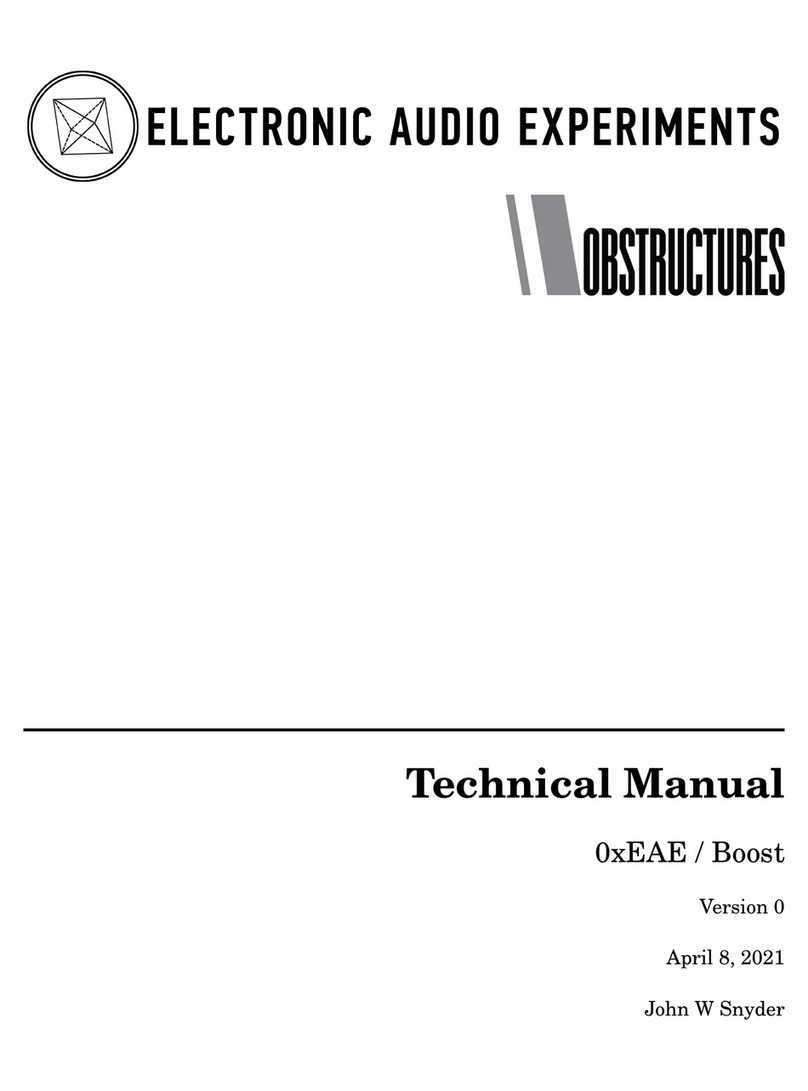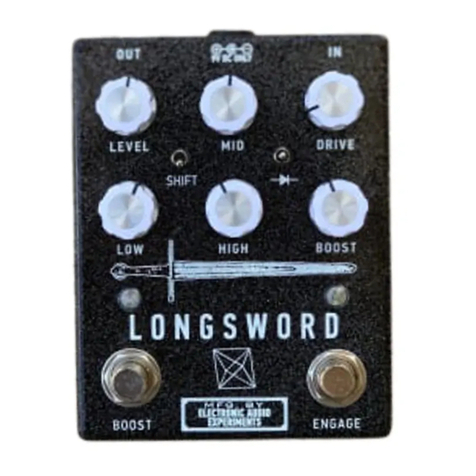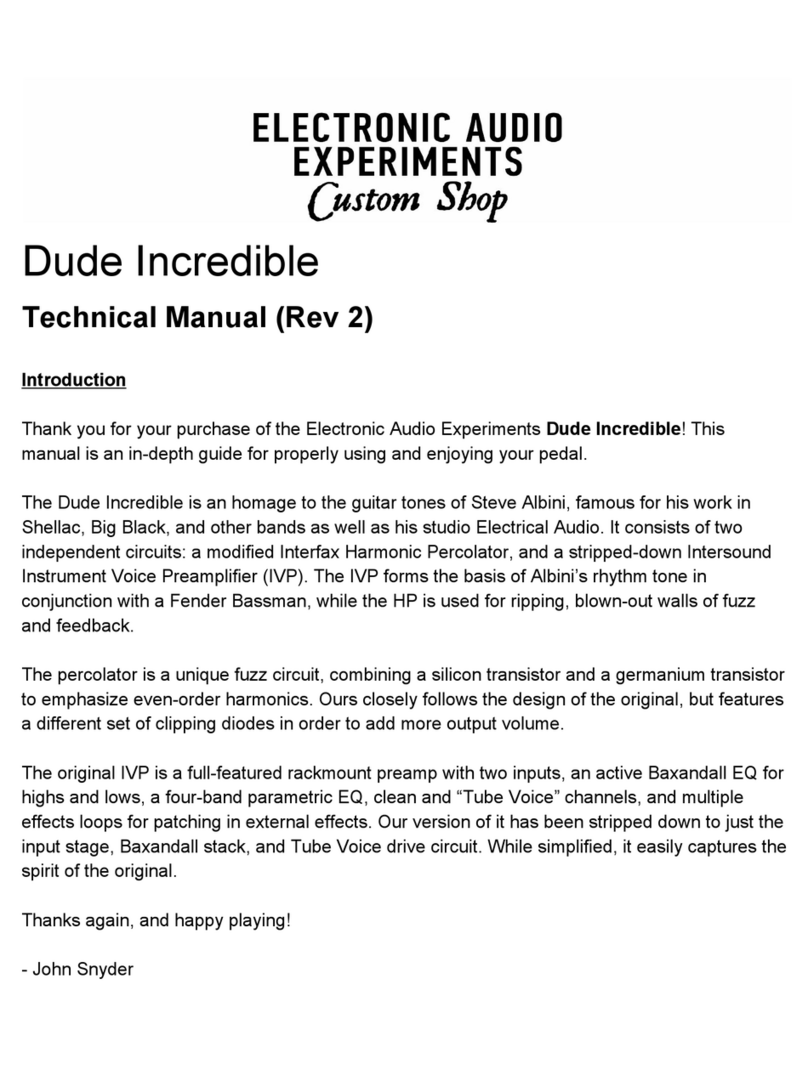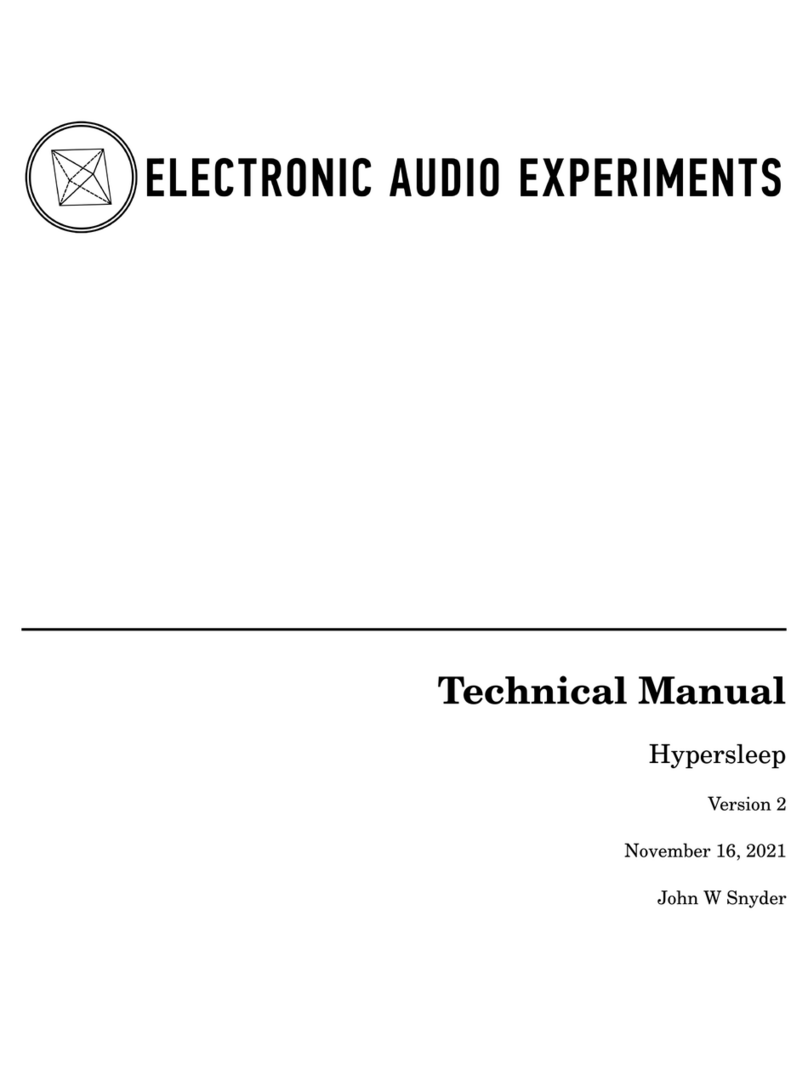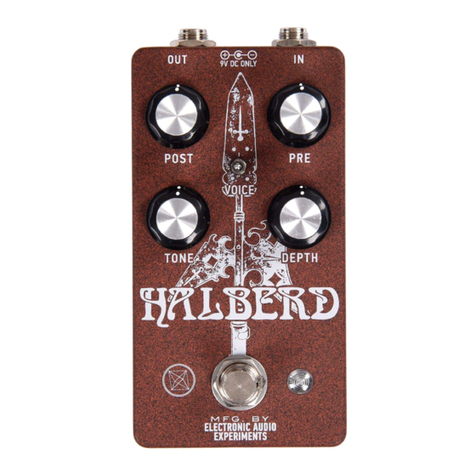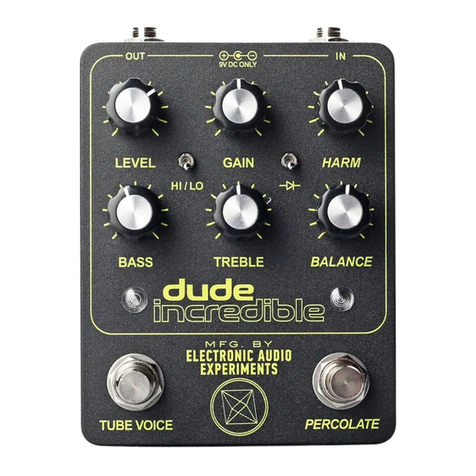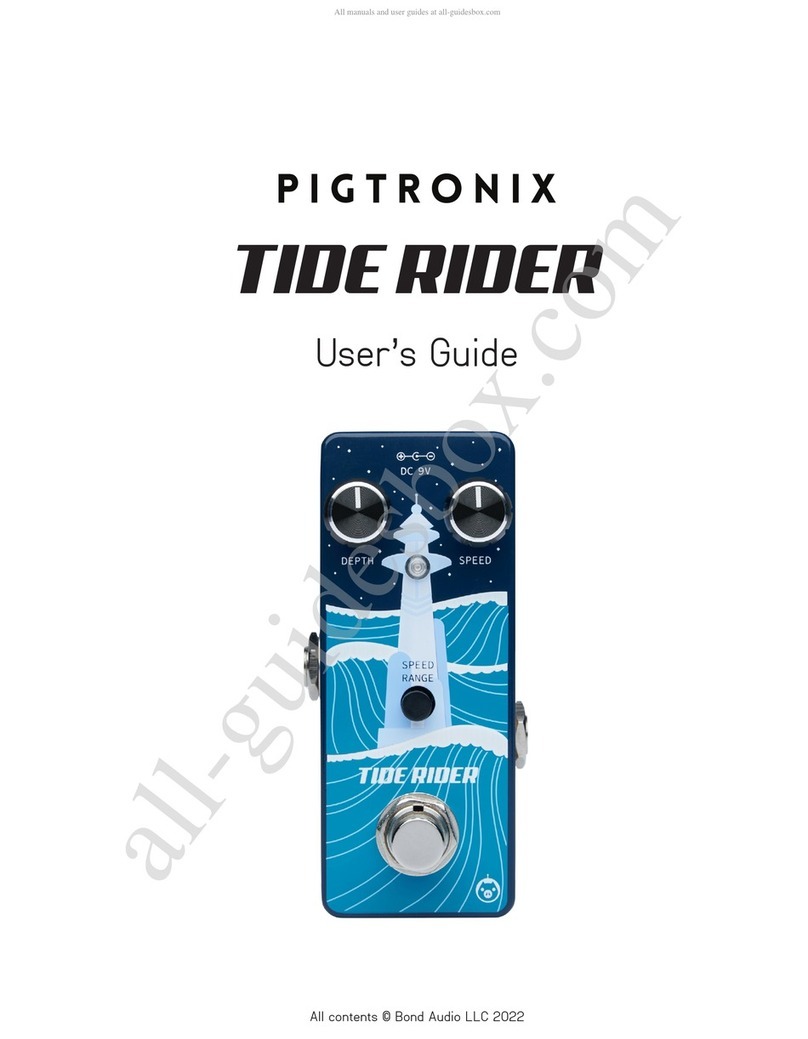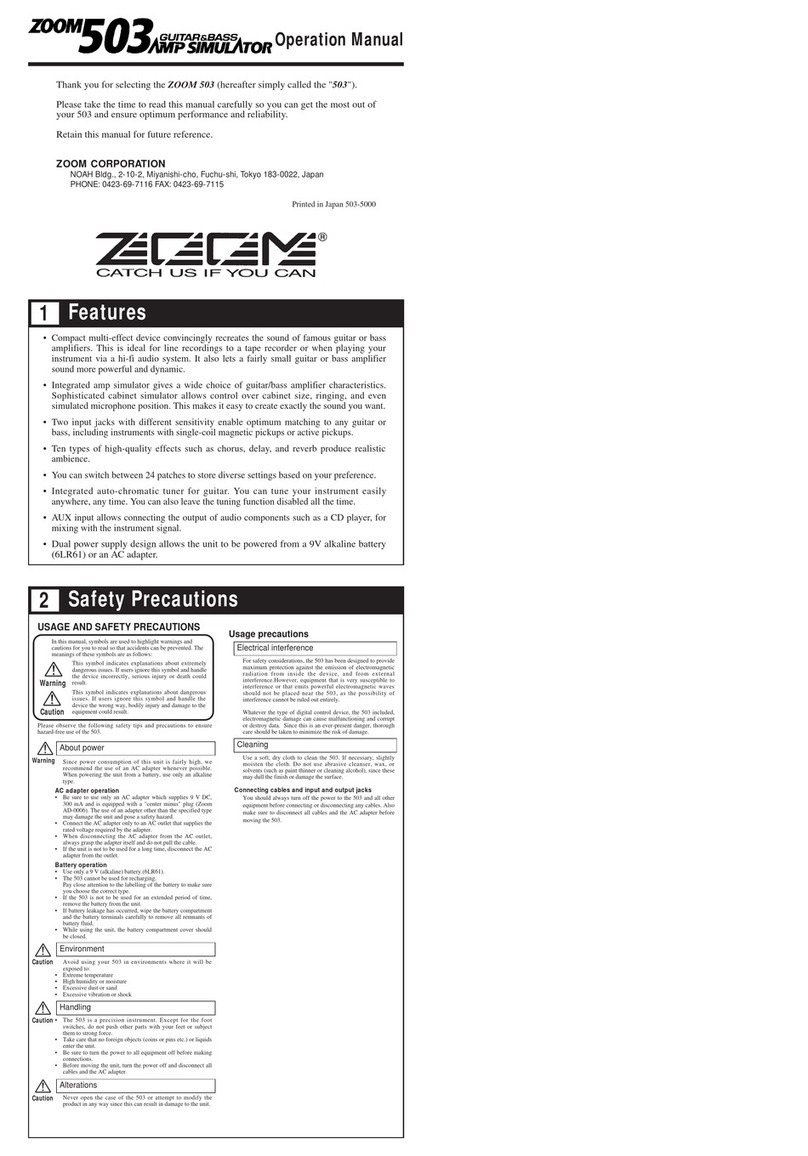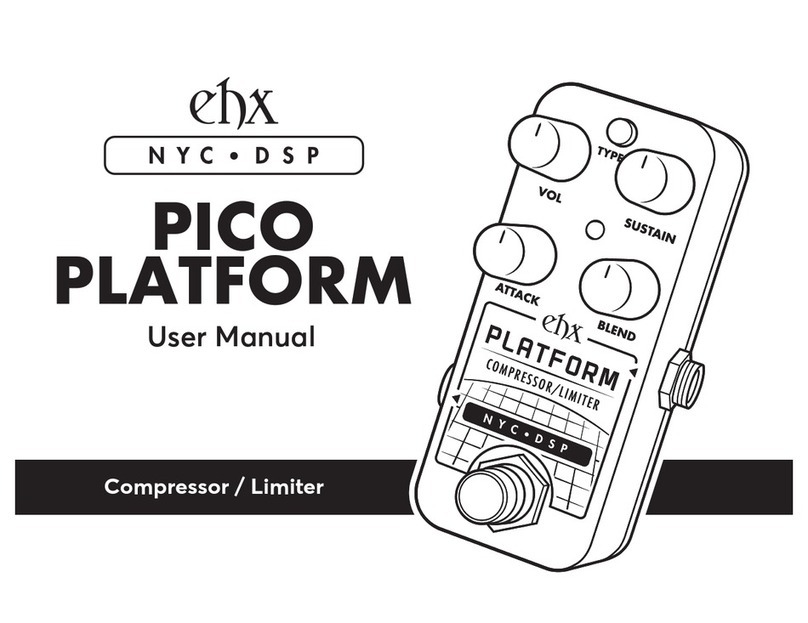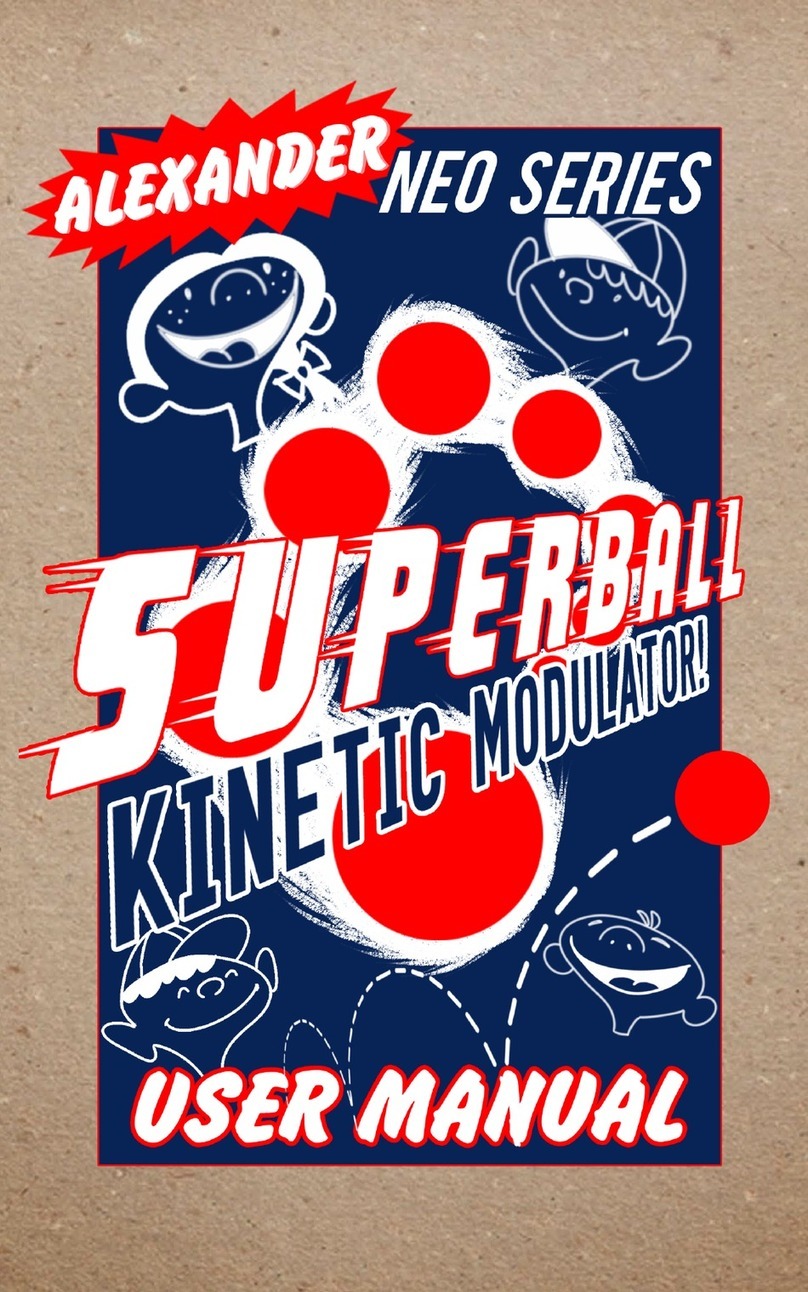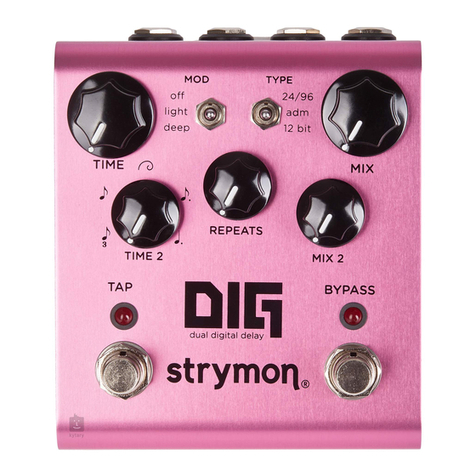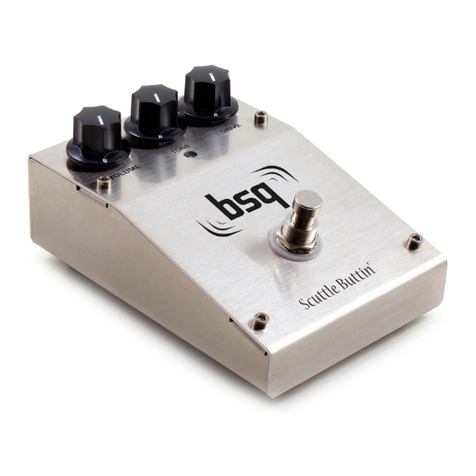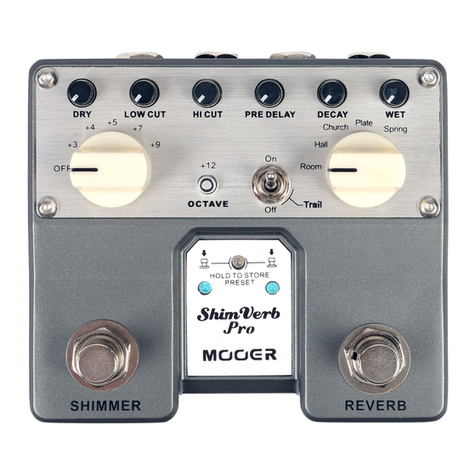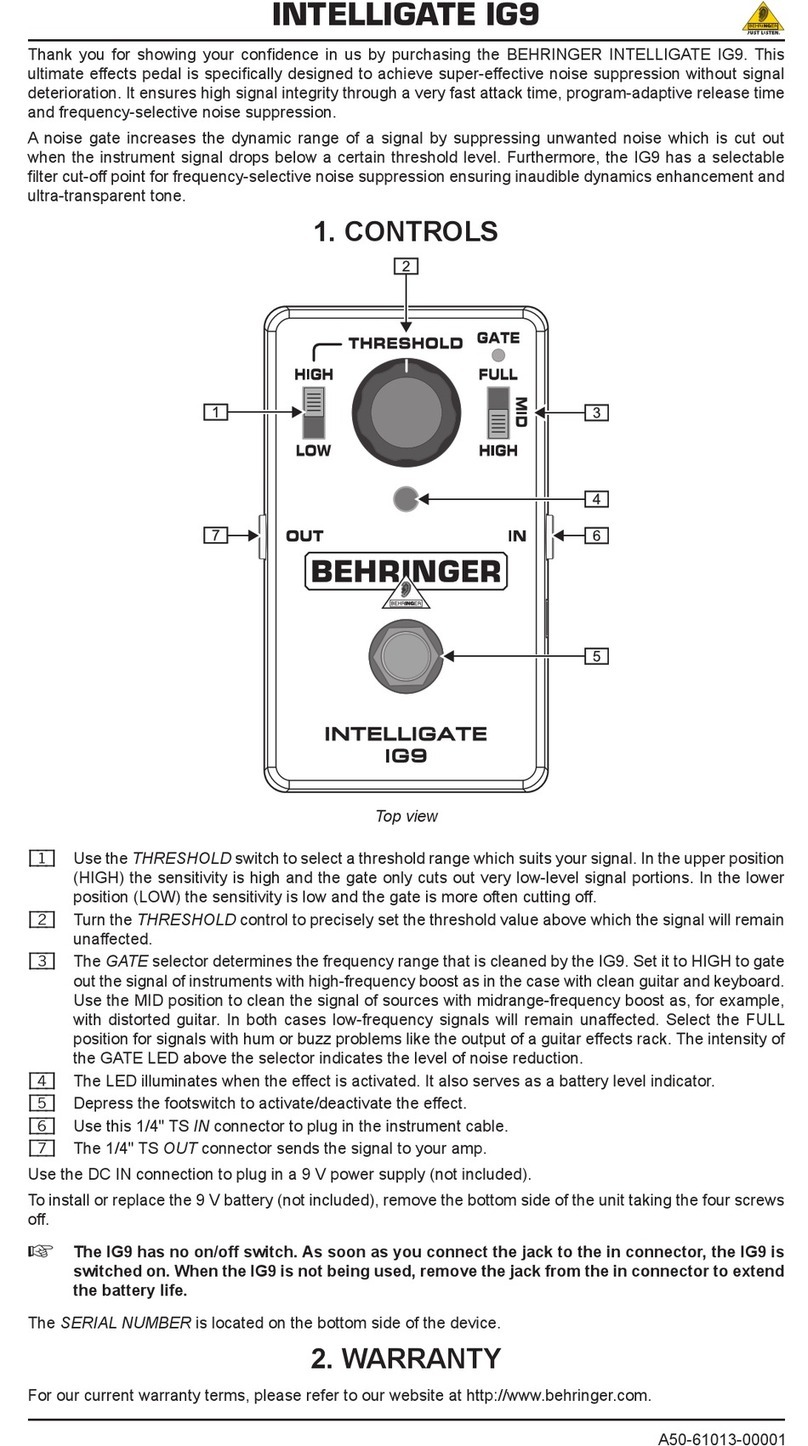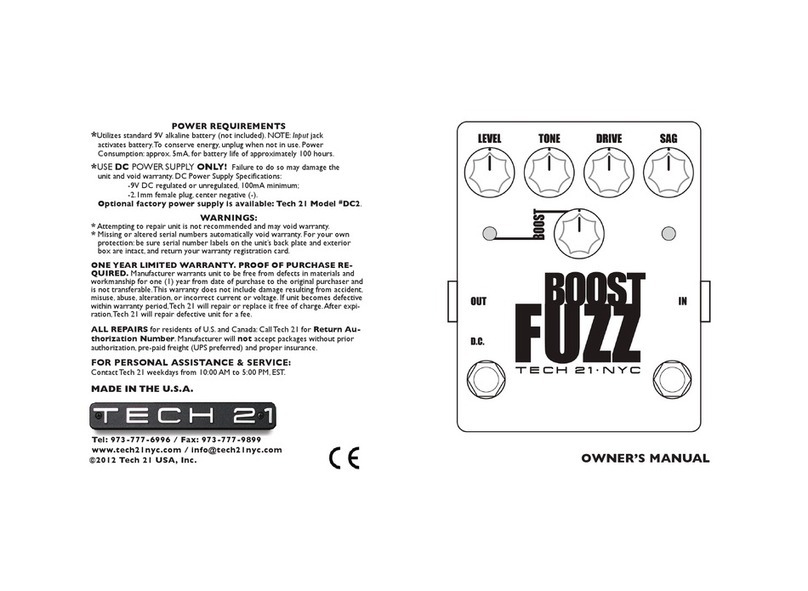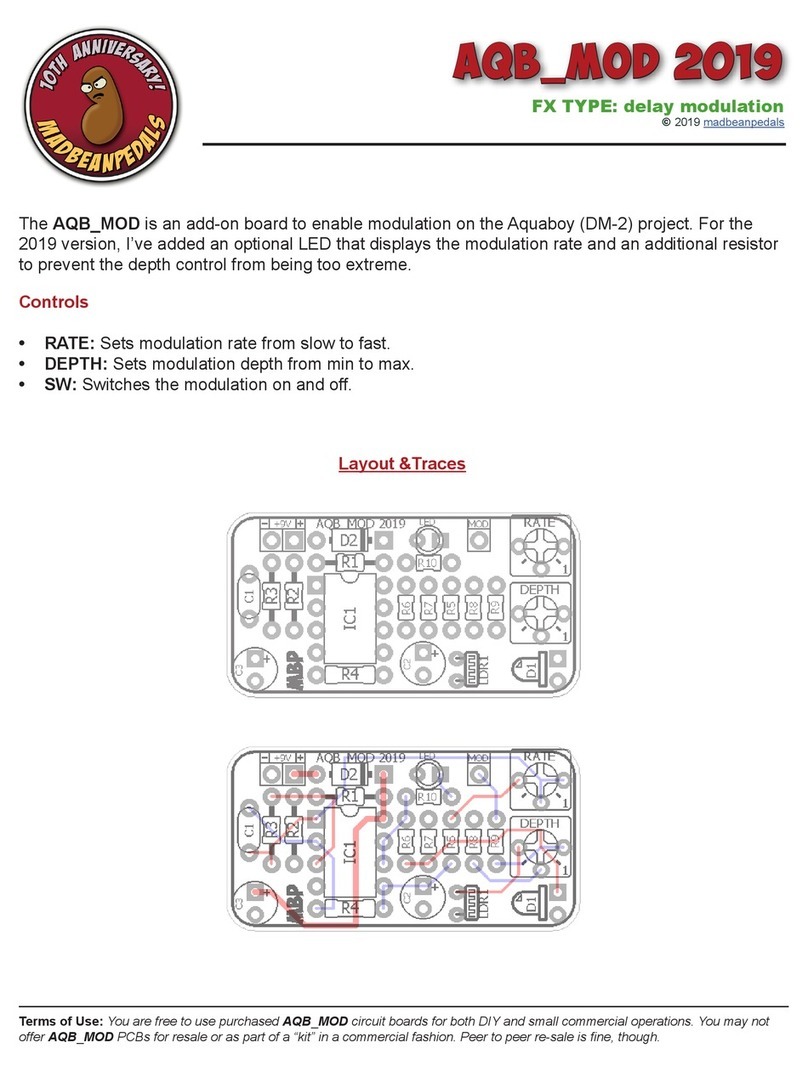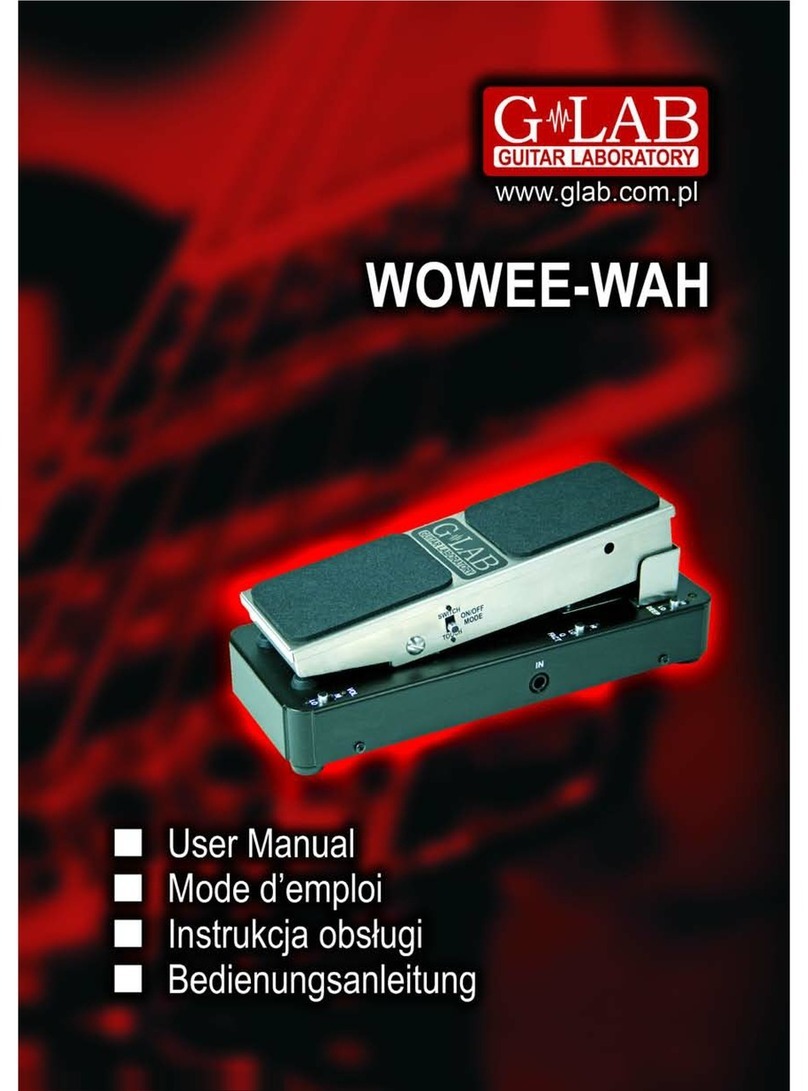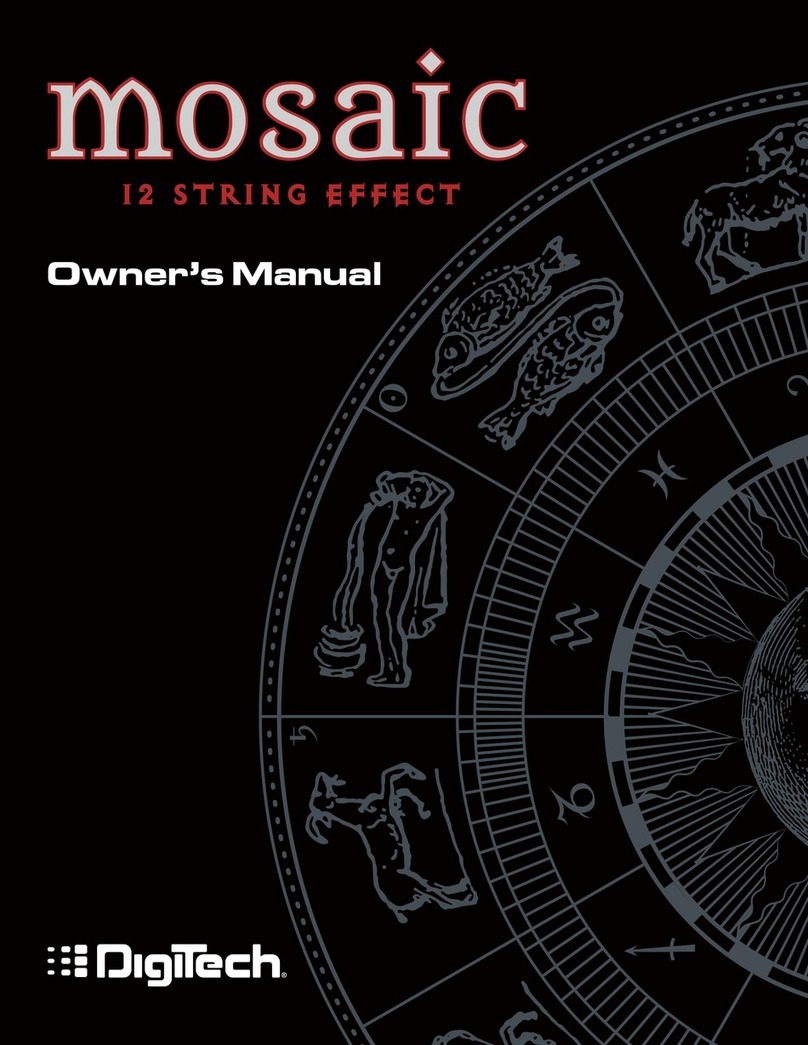Operation
Only use a standard reliable 9-volt center-negative DC power supply with this pedal! (e.g.
OneSpot, Voodoo Labs, Pedaltrain, etc.) Also, the Longsword does not operate on batteries.
The Longsword contains a charge pump which converts a 9V supply to 18 volts internally for
extra headroom.
A distortion circuit with more than the standard volume/tone/gain arrangement can take some
work to dial in, so here’s my recommended algorithm for dialing in the Longsword for the first
time.
1. Begin with your amplifier set to its optimal clean tone.
2. Then, set all of the EQ controls on the Longsword to noon, set the drive and level at
minimum, ensure the boost is is off, and set all toggle switches up.
3. Turn on the pedal and slowly increase the drive and level until they are to your liking.
You’ll notice that the drive control introduces a natural high-end rolloff as it is increased,
reducing harsh upper harmonics. You’ll also notice lots of volume on tap!
Next, it’s time to adjust the tone controls. With everything at noon, the Longsword has a
mostly flat response for guitar frequencies. The Longsword controls are like a studio EQ - the
bands are largely non-interacting, and small changes can have a drastic effect. Thus it is
recommended to adjust the equalizer gradually, with small boosts and cuts away from noon.
The low and high controls form a James-Baxandall arrangement, which are shelving filters that
cut frequencies below or above a certain crossover point. The mid control is a single band
boost/cut with a selectable center frequency using the FREQ toggle switch. Up on the toggle
corresponds to 1Khz (hi mid), and down corresponds to 300Hz (low mid).
Some notes on the EQ:
●The James-Baxandall stack is not just a bass and treble arrangement. If you boost both
the low and high, you can get an effective mid-scoop, and conversely you can cut both
to get an effective mid boost. Certain settings may reduce the volume output but there is
more than enough output on tap to compensate.
●The Longsword has a great deal of low end available, but a tighter tone can be achieved
by cutting the bass, particularly when combined with an already dirty amp
●Don’t be afraid to scoop the low midrange (set the FREQ switch up), as it may be a
source of muddy tone with some guitars, especially on the neck pickup!
●Extreme settings may be of interest, for example:
○Maximum bass and high gain will result in extra clipping of the later circuit
stages, producing a more fuzzy tone
○High midrange settings coupled with high gain, particularly on the center position
of the clip switch, will result in extra clipping at that particular frequency band
○High treble settings will result in a “clangy” sound with lots of pick attack

